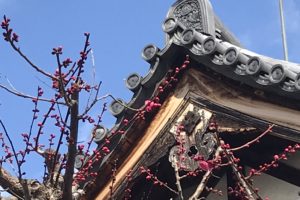6th Sunday of Easter, May 5th 2024
John 15:9-17, 1 John 5:1-6
Rev. Misa Furumoto
Happy Children’s Day! It is great that this Children’s Day falls on Sunday this year because we can really think about ourselves as children of God. What is it really to be a child of God? Today’s reading from the First Letter of John chapter 5 verses 1-2 says, “Everyone who believes that Jesus is the Christ has been born of God, and everyone who loves the parent loves the child. By this we know that we love the children of God, when we love God and obey his commandments.”
Every one of us who decided to live as a Christian believing that Jesus is the Christ our Savior, is a child of God. And everyone who loves the parent loves the child. This phrase sounds to me somewhat difficult to understand. Who is this child? Myself? Or other children of the parent? Or is it about my own children? It is not clear, but this may mean that love for the parent and love for the child should be reciprocal. Then the John’s letter says, if we love God and obey his commandments, then we know that we love the children of God. It sounds very simple, yet, somehow it is very abstract and difficult to grasp the essence.
Love is a very abstract concept because it is invisible, especially when we speak of love of God, agape. With human love, you can see the other person, so you can feel love through their actions, words, and facial expressions. But God’s love cannot be seen or felt in the same way with a human partner. Jesus, in order to explain this invisible love of God spoke with a parable of the vine and its branches. It is written just before today’s Gospel. If you have a lectionary, it is on the page 272, last week’s Gospel reading. In it, there is a verse read “I am the vine, you are the branches. Those who abide in me and I in them bear much fruit, because apart from me you can do nothing.” Yes, if the branches are cut off from the tree, they will die. It is because it cannot get water and nutrients. In the same way, we cannot live without God’s love flowing through us.
If we study the vine a little more closely, we will learn the following. A grapevine is a vine whose branches are completely indistinguishable from one another. It is impossible to determine where a single branch begins and ends, and every branch extends from the central vine and intermingles with every other branch. What this shows is that we are all connected to God, each one of us, and while receiving God’s love, we are also connected to our neighbors with God’s love.
But it’s still hard to imagine what a grapevine is like because it’s not something very familiar to us. So instead of talking about grapevines, I often tell my high school students a story like this: Each of us is connected to God like a baby in its mother’s womb, connected by the umbilical cord. The baby receives the necessary nutrients from the mother through this cord and grows. After growing big enough and being born into this world, this umbilical cord is cut with scissors. But did you know that even after that, there’s an invisible umbilical cord connecting the mother and the child? When a child gets hurt, falls ill, or feels sad, the mother suffers as if it were her own pain and wishes she could take their place if possible.
Furthermore, for parents, no matter how old their children get, they’re their “kids”. Even when they grow up, parents always worry about them, wishing for their happiness more than their own, and continue to pour out love. No matter how much a child may dislike their parents, parents never stop loving their child. I tell stories like this to illustrate God’s love. Of course, it is sometimes difficult for anyone to accept it as we are all human, and our love, even mother’s love for her child is incomplete, we all know. But God’ love for His children is complete.
I speak to the students like this: “Imagine that from each of our belly buttons, there’s an invisible umbilical cord zooming up to the sky. Now, with that cord still stretching, look around. Can you imagine that everyone, the person next to you, the one next to them, is all connected to God with their own umbilical cord? You, me, she, and he, we’re all children of God. What does that mean? It means we’re all siblings connected by God’s blood. Now, extend your arms, and connect with the person next to you. What do you see? A vertical line connecting God and you plus a horizontal line connecting you with your neighbors. Yes, it’s the cross.
If we become aware of the love of God flowing within us, we cannot help but love those around us. This is what Jesus taught us. He said, “Love one another as I have loved you.” He loved us first, and He chose us. How did then Jesus love us? The love of Jesus, it was about accepting you and me as his friends however we are wretched, weak, and sinful. He said don’t worry, it’s ok, and accepted us, with His arms opened wide, stretched out until nailed to the wood.
To “love one another” is to accept each other. The other person may have different thoughts or beliefs, and by some human measure, they might even be considered wrong. But what does it look like from God’s perspective? That’s something we can never fully understand. What is “justice”? If we claim to possess justice, then we must acknowledge that the other person also has justice. And the ultimate destination from there is nothing but forgiveness. There is no other way.
Forgiveness, it’s undeniably painful, but for that, each of us is connected to God by an invisible umbilical cord or a branch. Think, perhaps, I might be wrong too. And I, too, am a forgiven being. We always want to have room in our hearts to think that, even for a moment. If so, wouldn’t this world gradually draw closer to the kingdom of God?
Now, we will move on to the Holy Communion. Let us rejoice in being filled with God’s love and being children of God. And in the coming week, let us share this love with those around us.
In the name of the Father, the Son, and the Holy Spirit, Amen.














